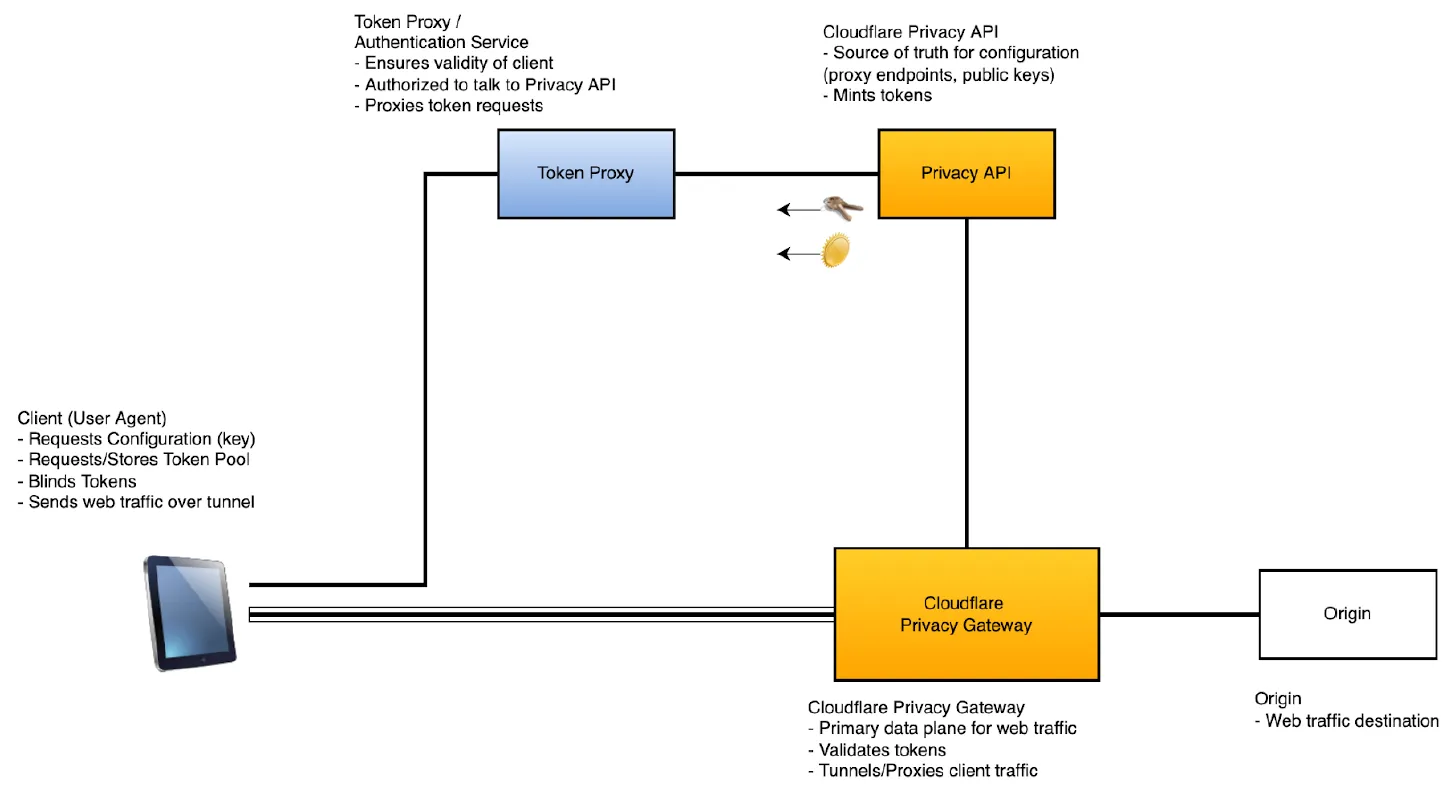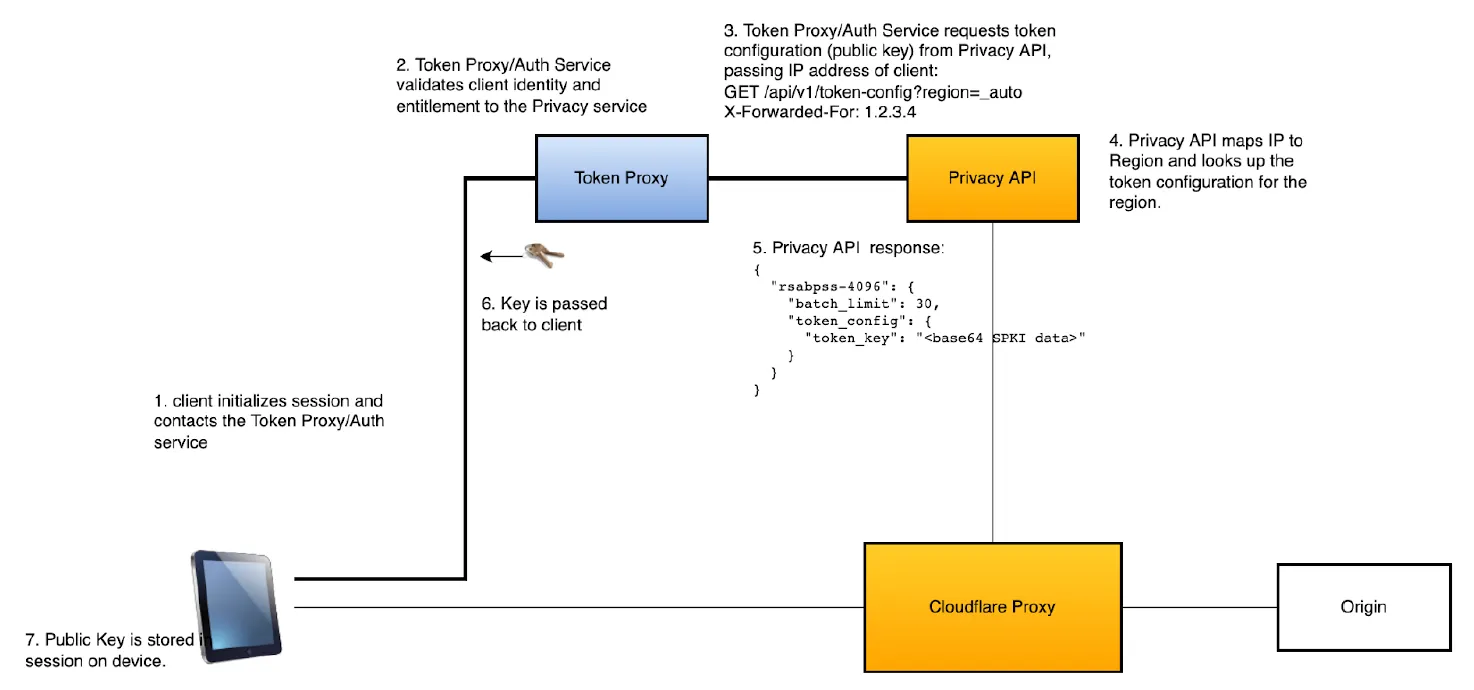Overview
The Cloudflare Privacy Proxy consists of a generic HTTPS CONNECT (and CONNECT-UDP ) proxy. The Cloudflare Privacy Proxy consists of a generic HTTPS CONNECT (and CONNECT-UDP) proxy that protects sensitive network level metadata from being exposed to third parties.
A high-level overview of how the Prixacy Proxy works is shown below. Control plane services are shown in orange. Dataplane services are shown in blue.

The following components comprise the Privacy Proxy system:
- Client: The end-user making HTTP requests via the Privacy Proxy from within a web browser and/or other supported client.
- Attester: The client-facing service that authenticates the validity of end-user accounts, validates entitlements, and requests a Private Access Token (PAT) from the issuer on behalf of the end user. Not operated by Cloudflare.
- Privacy API: Cloudflare service that issues PATs to the client for redemption against the Privacy Proxy service. Cloudflare Privacy Proxy mints Private Access Tokens (PATs) using the RSA blind signature protocol.
- Privacy Proxy: The HTTP CONNECT-based proxy service running on Cloudflare's edge. The Privacy Proxy validates the PAT passed by the client, proxies the HTTP request, and selects an IP address to egress with.
- Origin: The external (target) website for the end-user request.
DNS resolution uses Cloudflare's public resolver (1.1.1.1) infrastructure for name resolution.

A client requires configuration data (the region public key) to request tokens. The region public key is used to initialize the request for blinded tokens from the Privacy API.
The client should periodically refresh the region-based public key public key, especially after IP address changes, since Cloudflare will use the IP address to map to the region.
The region public key should be kept in the client session across multiple requests.

After the client is configured, it will need privacy tokens in order to make requests.
When the Private Access Token (PAT) pool is low/empty, the client can use the stored region public key to create a batch of new blinded token requests to send to the Privacy API through the Token Proxy.
The Privacy API signs the Private Access Tokens (PAT) and returns them to the client, which can store them in a pool for later use.

Once the client needs to make a connection to a new server, the client can connect to the Cloudflare Proxy service and request a connection to the origin with a Private Access Token (PAT) in the Proxy-Authorization HTTP request header.
This connection can be kept alive for multiple requests/responses from the server.
